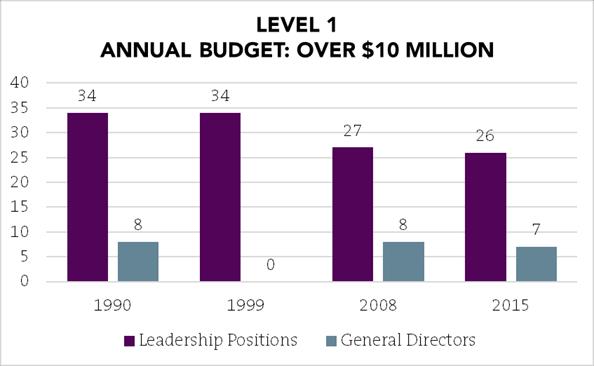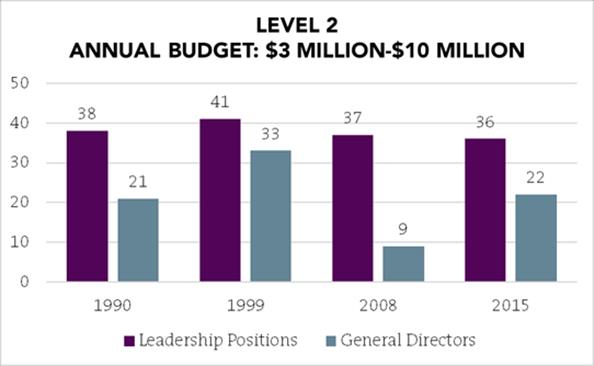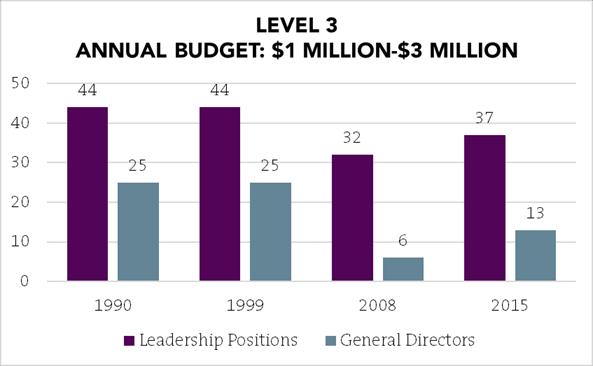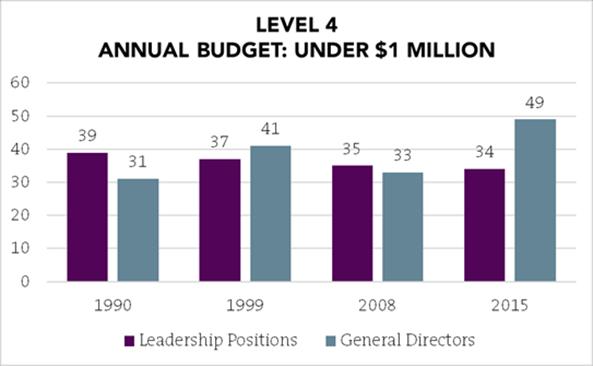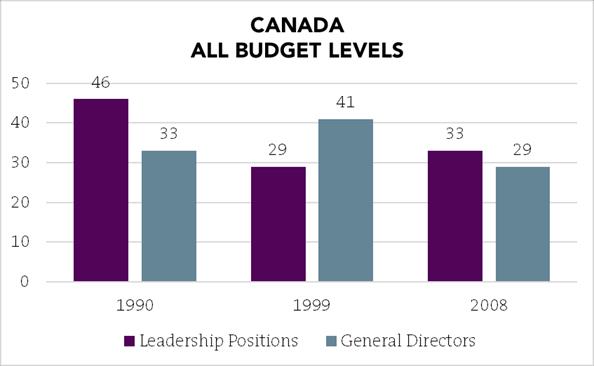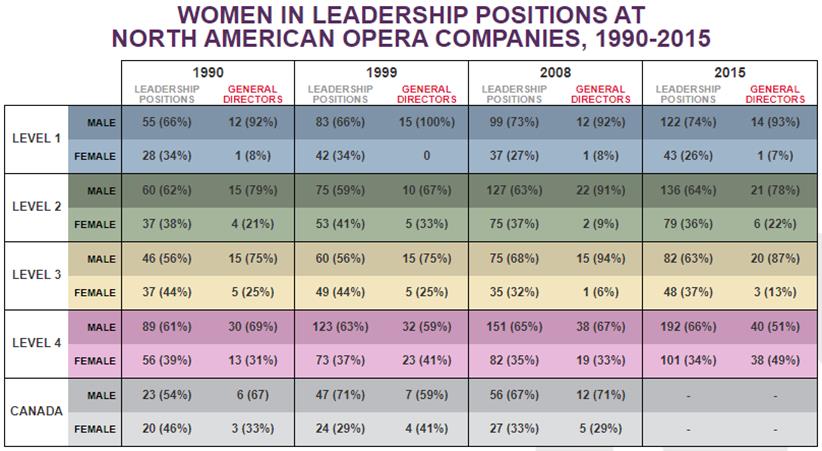Research Surveys: Women in Opera Leadership
Women make up a majority of the U.S. population (50.8 percent), earn almost 60 percent of all undergraduate and graduate degrees, and earn 47 to 48 percent of all law and medical degrees. Although they hold almost 52 percent of all professional-level jobs, American women lag substantially behind men when it comes to their representation in leadership positions. They represent only 14.6 percent of executive officers, 8.1 percent of top earners, and 4.6 percent of Fortune 500 CEOs. They hold just 16.9 percent of Fortune 500 board seats and continue to earn only 71 cents on the dollar to their male counterparts in all leadership positions.
OPERA America conducted two preliminary research surveys about women in leadership roles within its membership as a representation of the field of opera: one specifically for general directors/CEOs and one for all leadership positions (e.g., divisional directors, artistic leaders). Both surveys span from 1990 to current 2015 data.
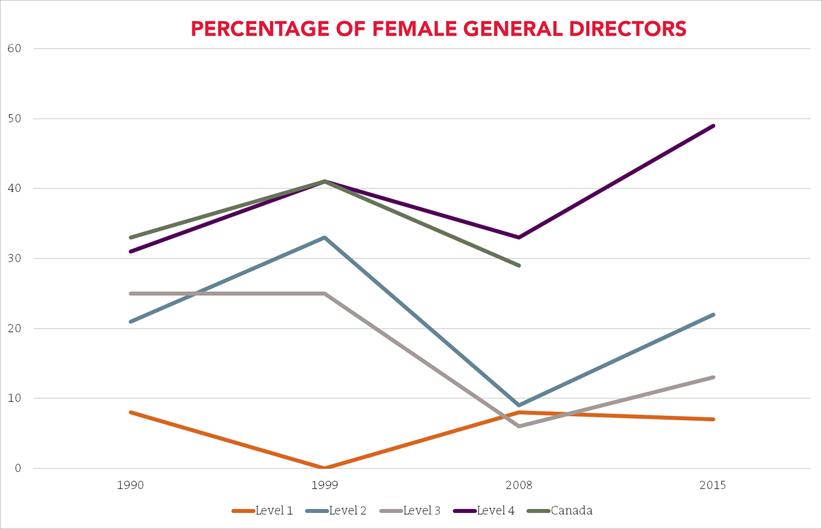
General Directors/CEOs
The results show that historically there remains a static, very low (less than 8 percent) ratio of female general directors at the companies with the largest budgets (Level 1).
The GD/CEO percentages at Level 2 and Level 3 companies have shown more variance but remain on average between 17 to 21 percent over the last 16 years.
The place where there has been the most significant increase in leadership gender parity is at the Level 4 companies (those with the smallest budgets), which are often organizations founded by women. The historic average is over 38 percent, and in 2015, 49 percent of Level 4 GD/CEOs are women.
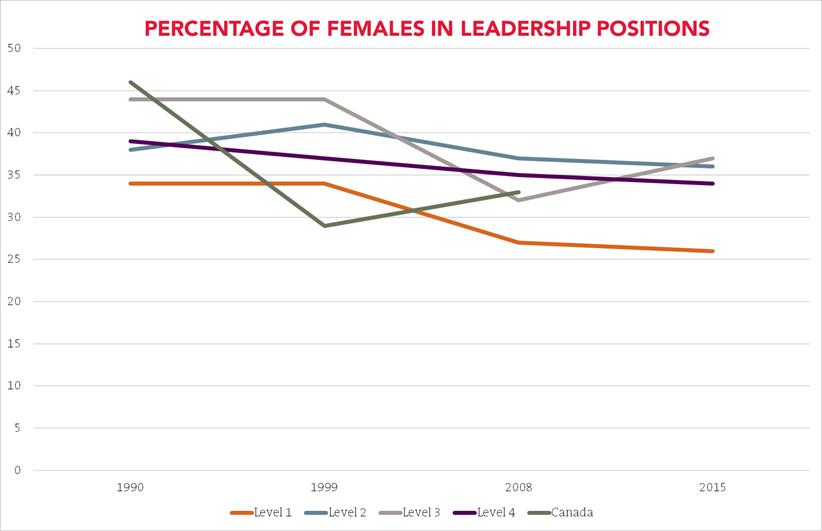
Company Leadership Positions
This data is less encouraging, showing an actual decline in the number of women in leadership positions at all levels of opera companies over the last 16 years. While the general numbers seem to indicate a steady increase in female leaders, the ratios to male leaders in the same positions show a decrease of between 4 to 8 percent from 1990.
The graphs below show the statics and percentages, followed by links to the detailed findings from several other resources that present research on women in leadership roles in other sectors of the arts.
